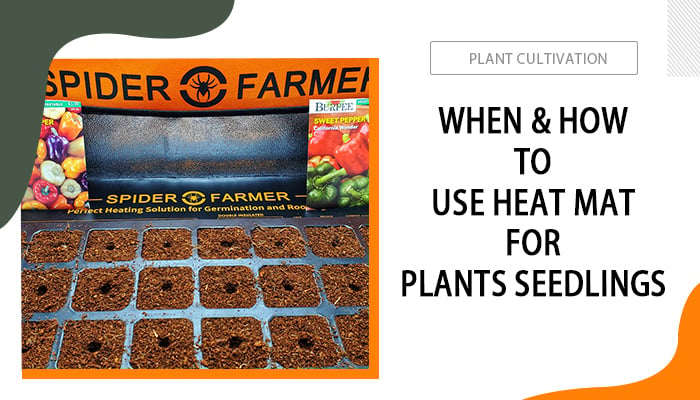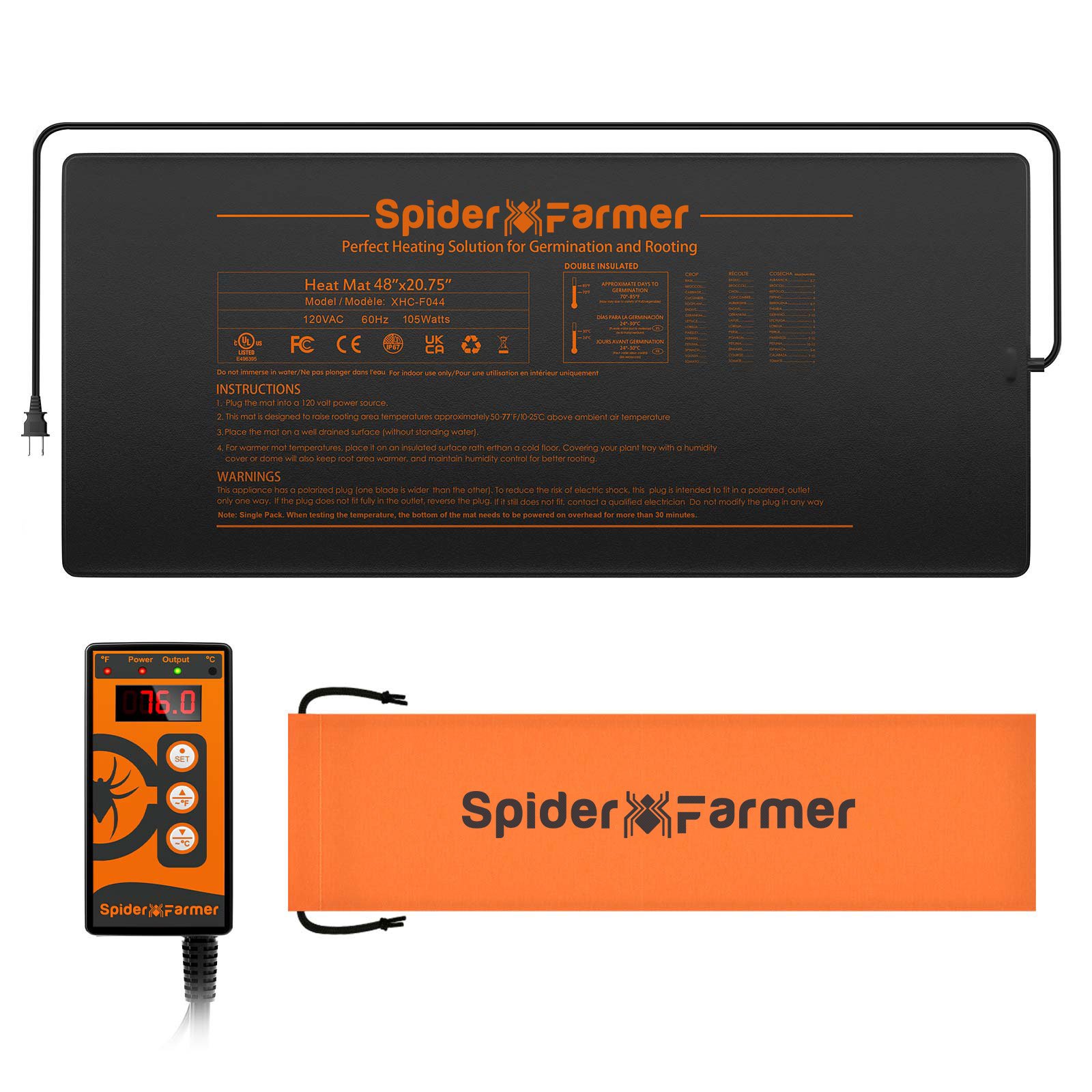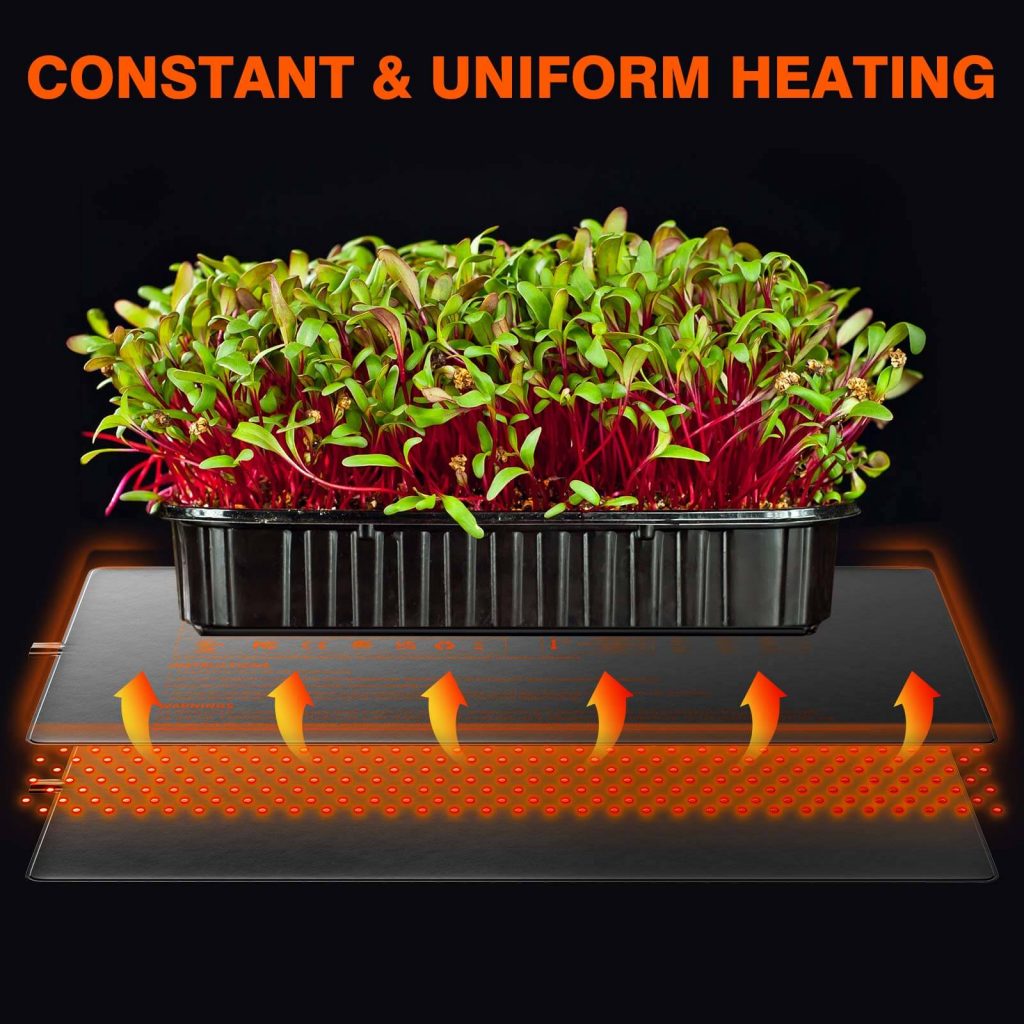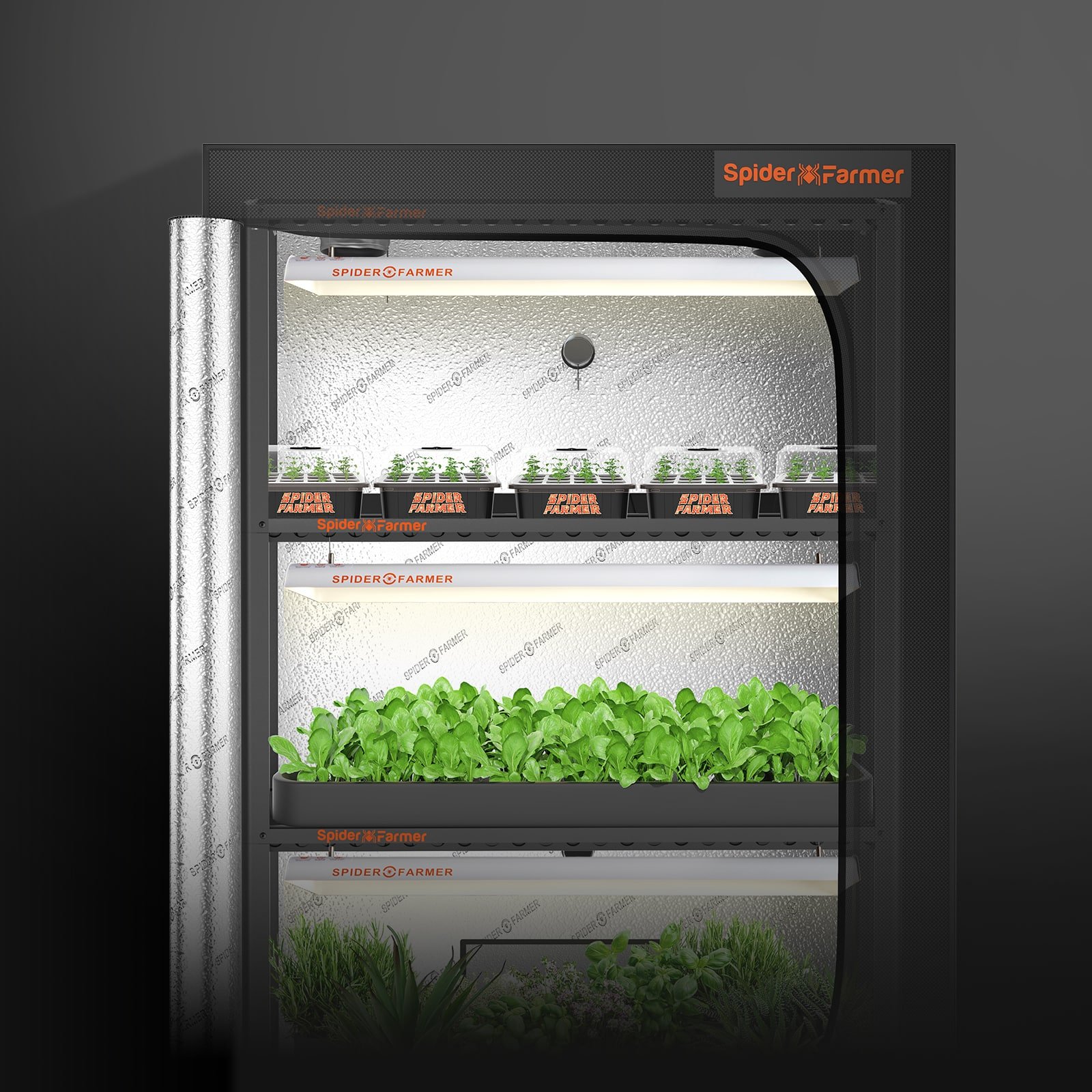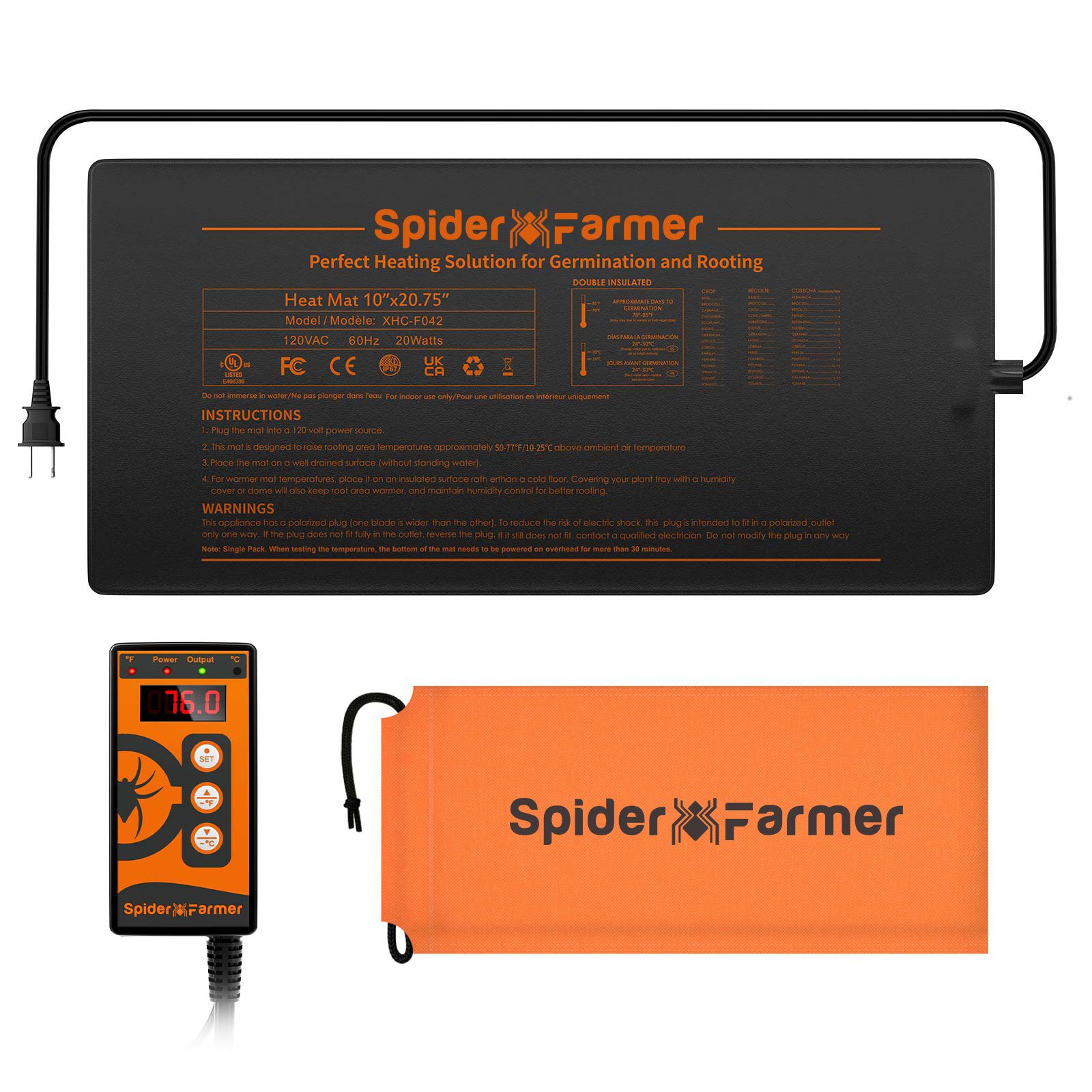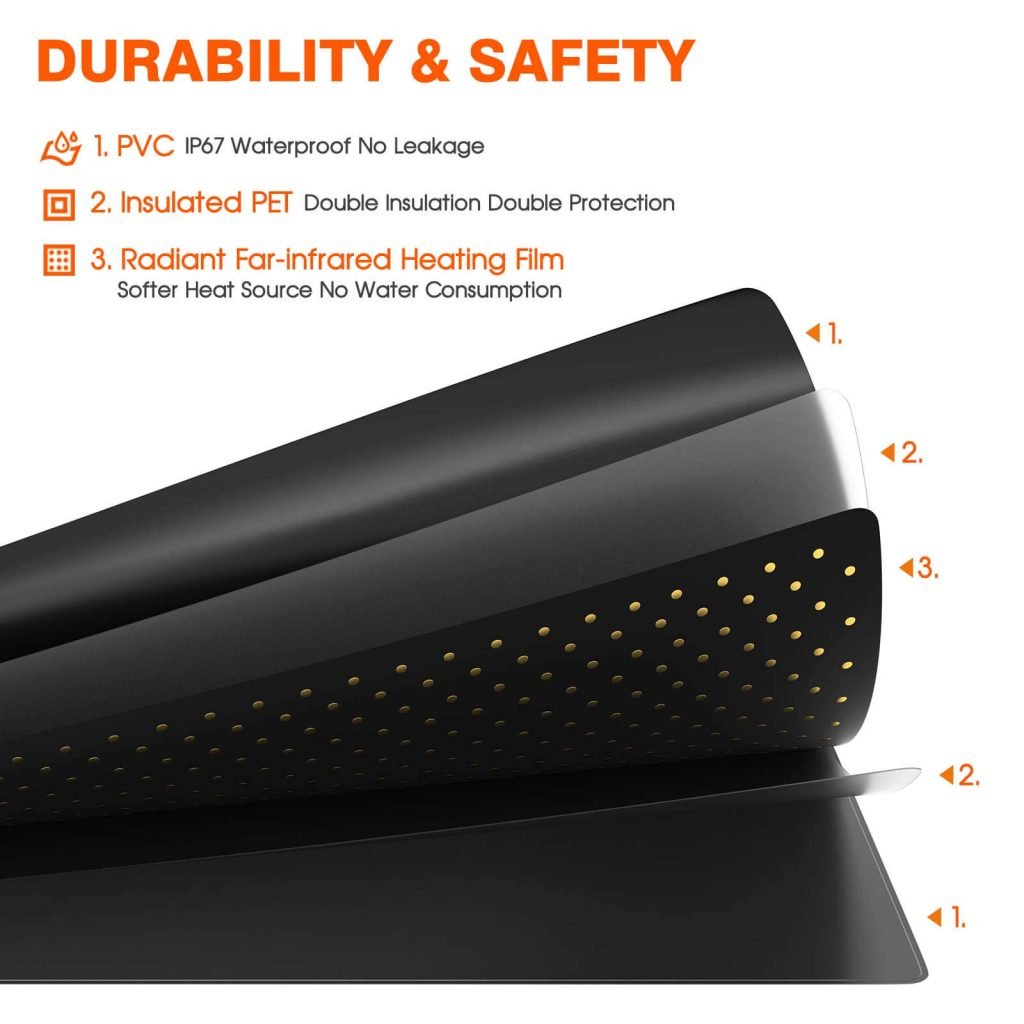How to Use Heat Mat for Plants Seedlings
Maintaining optimal temperature is vital for successful seed development, especially in the winter. Otherwise, you are likely to experience slow germination, stunted growth, or failed propagation attempts. Thanks to the technology, that's where the heat mat for plants comes into play. Heat mats are innovative devices designed to provide controlled warmth to plant roots. In the following guide, we will explore the world of heat mats for plants, unveiling why, when, and how to use a heat mat for indoor plants. For those wondering whether they can DIY a heat mat or not, exclusive tips and tricks are also included.
Table of Contents
A Comprehensive Overview of Heat Mat for Plants
What is a heat mat for seedlings exactly? Moreover, does it really help your seedlings to grow? Whether you are new to the plant heat mat or skeptical about it, we’ve provided an all-rounded overview that should clear some of your concerns.
What Are Heat Mats for Plants
Typically made of durable materials and coming in various sizes, heat mats, also known as seedling heat mats or propagation mats, are specialized devices equipped with heating elements that distribute warmth evenly, and therefore provide consistent and controlled heat to the roots of your plants. A heat mat for plants allows for an optimal environment for seed germination, seedling growth, and root development.
How Do Heat Mats Work
Heat mats utilize electric heating elements to generate a gentle and consistent heat source. When placed underneath seed trays, the mats radiate warmth upwards, creating a warm microclimate around the roots. This steady temperature accelerates the metabolic processes within the plants, stimulating faster germination, robust growth, and enhanced nutrient absorption.
Types of Heat Mats
- Electric Heat Mats: Electric plant heat mats are versatile and commonly used for various plant propagation purposes as they can be adjusted to specific temperature settings, making them suitable for a wide range of plant species.
- Propagation Mats: Propagation heat mats are often waterproof and come with a thermostat for temperature regulation. These mats offer consistent warmth for successful germination and early plant development.
- Seedling Heat Mats: Seedling heat mats are smaller-sized mats designed to accommodate individual seedling trays. As the most widely used heat mats for plants, they are ideal for maintaining an optimal root temperature for young seedlings, promoting healthy growth, and reducing the risk of damping-off diseases.
Benefits of Using a Heat Mat for Plants
Are heat mats good for your plants? Although some of the advantages of aiding your plants with heat mats are briefly mentioned above, we’d like to explore them deeper.
- Enhanced germination rates: Heat mats provide the ideal warmth needed to promote quicker and more uniform seed germination, increasing the overall success rate of starting seeds.
- Faster seedling growth: The controlled heat from the mats accelerates root development and enhances nutrient uptake, resulting in faster and healthier seedling growth.
- Protection against cold environments: Heat mats create a warm grow tent temperature, protecting plants from chilly temperatures and frost, making them particularly useful in colder regions, or during the winter.
- Improved root development: The warmth provided by plant heat mats stimulates root growth, leading to stronger and more extensive root systems. Well-developed roots support healthier plants with better nutrient absorption and overall resilience.
When to Use a Heat Mat for Seedlings
First things first, you don’t always need a heating mat in the seed-sprouting process. A general rule of thumb is to use heat mats for plants when you need to raise the soil temperature to support the germination process.
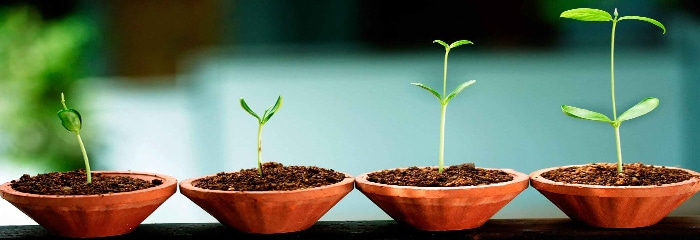
What is the ideal soil temperature for your seeds to germinate? While the answer varies slightly different among crops, most seeds sprout when the soil temperature reaches between 68° to 86°F. If the temp goes anything below the range, it’s high time to use a heat mat for your plants.
How to Use a Heating Mat for Plants
Before hands-on doing anything else, it’s important to figure out the seed germination process so you can find the perfect timing to apply a heat mat. Below list some common crops and their seed germination frames.
- Radishes: 3-7 days
- Cucumbers: 7-10 days
- Carrots: 10-14 days
- Spinach, peas, corn, watermelons: 7-14 days
- Sunflowers: 7-14 days
- Lettuce: around 7 days
- Leeks, parsnips, broccoli, carrots, and kale: 10-14 days
- Tomatoes, peppers, and solanaceous plants: variable, around 10 days (sometimes longer)
With these seed germination frames in mind, you’ll know when to pay special attention to the soil temperature.
Best Practice to Use A Heating Mat for Plants [Step-by-step Guide]
Now it’s time to do some real work. To save you time from watching tedious video tutorials, we’ve prepared a step-by-step guide on how to use heating mats for plants in the following. Grab your attention and let’s get started.
Step 1. Select the Right Heating Mat for Seeds
How to choose a heating mat for seeds mainly lies in two crucial factors - size and temperature control features.
- Plant heat mat size: Choose a heating mat that matches the size of your seed trays. Ensure that the mat's dimensions are appropriate to cover the entire bottom surface area of your planting containers for efficient heat distribution.
- Heating & temperature control features: Some heating mats come with powerful heating and temperature control features, allowing you to adjust and maintain the desired temperature for optimal seed germination.
As a well-known manufacturer in the indoor growing industry, Spider Farmer offers rich lineups, including heat mats specifically designed for providing warmth to plants during the germination and propagation stages. What makes Spider Farmer heat mat stand out? Check the features below.
- Advanced heating technology: The seedling heat mat uses the latest far-infrared film technology that can raise the soil temperature by 50-77°F (10-25°C) within 2 minutes, along with low power consumption.
- Thermostat controller: Although it’s not a must-have, a thermostat does good work in eliminating the need for constant monitoring of weed growing tent temperatures. Luckily for you, Spider Farmer heat mat comes with a plug-and-play thermostat that makes it possible to set desired cutoffs and adjust the temp from 40°F-108°F.
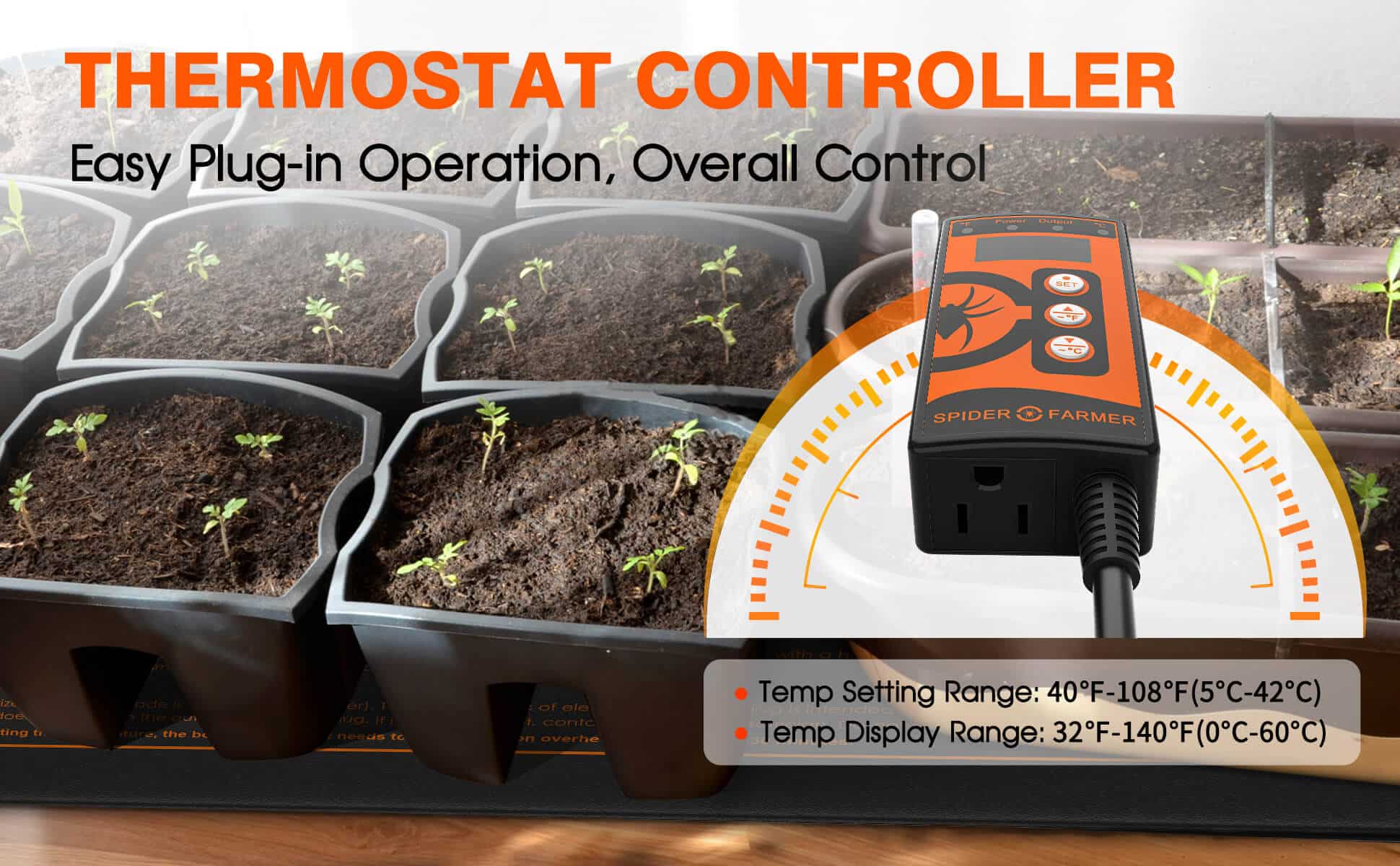
- Two heat mat sizes with premium material & reliable quality: Come in two sizes, 10” X20.75” and 48” X20.75”, both the heating mats have a durable five-layer structure, including heavy-duty PVC material and insulating PET layers, complying with MET and UL standards for safety and longevity.
In addition to the key features, Spider Farmer heating mat for seedlings is water-resistant (IP67 rating) and easy to clean, ensuring safe operation, equipment hygiene, and a prolonged lifespan. Moreover, it’s widely versatile and applicable to aquariums, reptiles, and other animals.
Spider Farmer® 48”X20.75” Seedling Heat Mat and Digital Thermostat for Germination
Spider Farmer® SF600 growshelves Indoor led grow light and Metal Plant Stand with Plant Trays
Spider Farmer® Waterproof 10”X20.75” Seedling Heat Mat for Germination Indoor Gardening
Step 2. Set up the Heating Mat
Place the heating mat on a flat, stable surface in an easily accessible location of the grow room or the indoor grow tent kit. Follow the manufacturer's instructions for proper installation, ensuring compatibility with your electrical outlet.
Step 3. Position Seed Trays
Place your seed trays on top of the heating mat, ensuring even coverage of the heat mat's surface to provide uniform heat distribution. Fill your seed trays with the appropriate growing medium if necessary and then plant the seeds at the recommended depth and spacing for each plant variety.
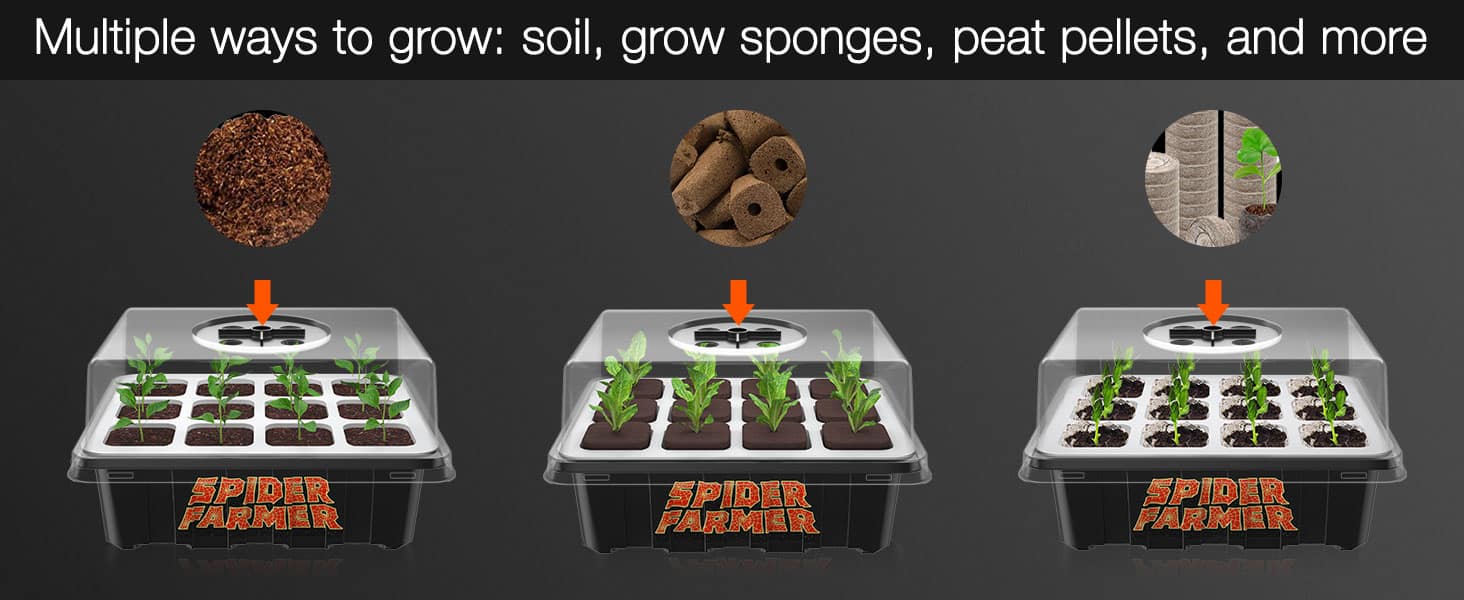
It’s worth noting here that heating mats for seeds are not suitable for potted plants, particularly large pots or containers, as the indirect heat generated by the mats is insufficient to keep them warm. Additionally, using the mat with small containers can cause the soil to dry out too quickly, potentially leading to dry root rot.
Step 4. Adjust the Temperature
If you are using a Spider Farmer heating mat, set it to the recommended temperature for the specific plants you are growing. As the seedlings emerge, gradually reduce the heat provided by the heat mat to let them acclimate to ambient room temperatures.
Step 5. Adjust Heat Mat Usage
How long should the heat mat for plants be on? While waiting for your seed to germinate, it is generally safe and recommended to keep the heat mat on for 24 hours a day until your seeds start germinating. After 3 to 14 days of duration, depending on the specific crop, unplug the heat mat once about half of the seeds have sprouted.
Bonus: Can I DIY a Heating Mat for Indoor Plants
Yes, it is possible to DIY a heating mat for indoor plants, and it may be easier than you expect. One common method is to use an electric heating cable or heat tape designed for seedling propagation. You can lay the cable or tape evenly on a waterproof surface, such as a plastic tray, and cover it with a layer of moistened sand or seedling soil.
Another less complex and budget-wise option is to recycle holiday lights and turn them into a lighted heater. Although the heat intensity is much lower than professional heat mats for indoor plants, it can be a good start if you are into DIY handcrafts.
Verdict on Heat Mat for Indoor Plants
To sum up, although heat mats for plants are not essential tools to grow plants, they are indeed valuable during the seed germination stage. By providing consistent warmth to the seeds, a heat mat promotes faster and healthier sprouting, especially for plants in colder climates. With Spider Farmer heat mat for plants, you can benefit from blazing-fast heating acceleration and full temperature control from two sizes to choose from.
FAQs about Heat Mat for Plants
- Do plant heat mats work?
Yes, plant heat mats are beneficial to your plants by providing a controlled and consistent source of heat that promotes seed germination.
- Do I need a heat mat for plants?
A heat mat is not always necessary for all plants, but it can be beneficial, especially for starting seeds or growing plants in cooler environments when you notice unusual and stunted growth.
- What can I use instead of a heat mat for plants?
If a heat mat is not available, alternative methods to provide warmth include placing seed trays on top of a warm surface like a refrigerator or using incandescent lights to create heat. Obviously, it’s hard to reach the same heat level provided by a heat mat.


